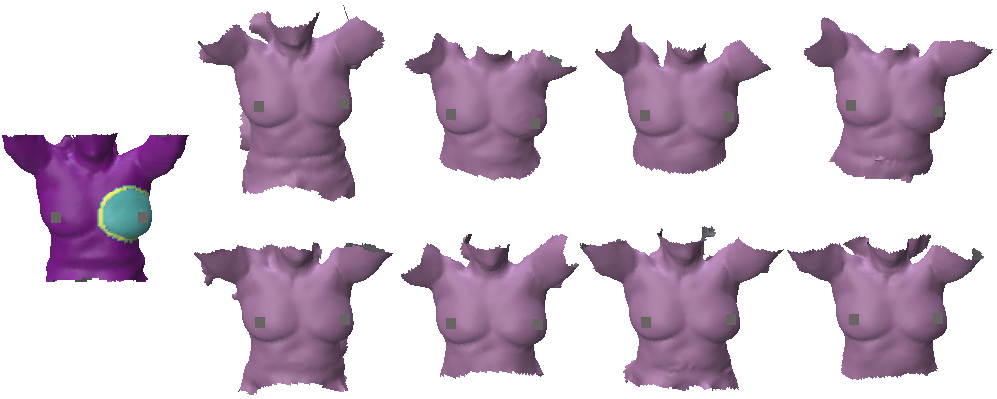Learn more about my PhD subject
Context and Objectives
This PhD in Computer Science, performed within the MSII Graduate School, was hosted at the ICube Laboratory in the University of Strasbourg, co-directed by Hyewon Seo and Michel de Mathelin and supervised by the Pr. Georges Noël. Its main goal was to model the breast shape, with a specific aim to examine the morphological change of breasts (shape and size as measured by the volume) during the post-operative irradiation therapy.Subject
Breast radiotherapy after conservative breast surgery is a systematic step in the treatment of breast cancer. As a mobile external organ, the mammary gland is subject to several uncertainties regarding daily breast positioning, which makes it a hard subject to measure and study. These uncertainties depend on systematic and stochastic daily errors including at least positioning errors, respiratory moves, seroma involution and oedema/inflammation phenomenon. Yet, little is known about the morphological variations of the breast and their impact on the treatment quality.
This PhD subject, entitled "Functional Map-Based Shape Collection Matching and Analysis for Modeling Breast Shape Evolution During Radiotherapy" aims to study the breast changes during the treatment by using clinical trial data coming from the Institute of Cancerology Strasbourg Europe: ICANS. After the removal of the breast tumor, radiations are send to the patient to make sure no cancer cells survived and to prevent a relapse of the cancer. However, in many cases, the breast irradiation planning is only set once before the therapy and then applied each day for a month. As clinicians observed breast surface changes during the treatment, our goal is to estimate the breast deformations and their potential impact on the treatment quality.3D scan acquisitions for one patient: the treated breast is shown on the CT scan data
We have at our disposal 3D surface scans acquired during a clinical trial performed by ICANS together with the planned irradiation dose and the CT scan of the patient. From this data available thanks to the clinicians and patients that agreed to participate to the clinical study, we use abstract notions such as "functional maps" to find semantic relations between 3D shapes and thus track the breast evolution during therapy on several patients. By using 3D surface scans, we reduce as much as possible the radiations send to the patient as well as the difficulty and cost of images acquisition, compared to CT scans or MRI for instance.
Participating in this multi-disciplinary project allowed me to develop a comprehensive understanding of the needs of radiotherapists and radiophysicians. By adopting a collaborative approach, we created effective solutions to better understand changes in women's breasts during treatment. This project was also a coding experience where I improved my developing skills to provide efficient tools that are easy to re-use and improve. I developed for instance a Dashboard in Julia, and interactive tools for 3D shape matching and analysis in python.
For more details
I'll be adding more details to this page soon. Please feel free to contact me if you'd like to learn more about this project.
In the meantime, my thesis manuscript is available as a .pdf file on the theses.fr platform. You can find it here, along with an abstract and some more details. For the curious, my thesis defense presentation slides are available here.Related notions:
The Shape Matching problem
What are correspondences?
The Shape Matching or correspondence problem aims at finding semantic relations between different objects.
While this definition is very general, the objects considered in real applications are usually represented as triangular meshes like the ones you can see below. In this case, the correspondence problem can be stated as finding for each vertex (point) on the red mesh its corresponding one on the blue mesh. This correspondence between points is represented on with a green line connecting two corresponding points.
3D WebGL model not available in this environment.
Two face meshes from the COMA Dataset are displayed above in 3D. Click, drag, and zoom to interact with the models!
